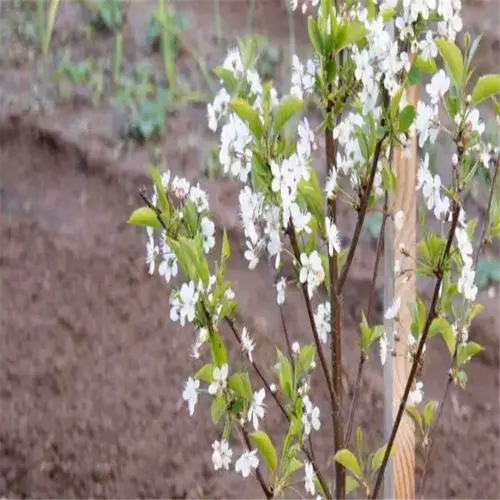How to Grow Coffee at Home: Expert Tips for Success

Written by
Tina Carter
Reviewed by
Prof. Martin Thorne, Ph.D.How to grow coffee: Select Arabica for success indoors and use dwarf varieties
Keep temperatures between 60-75°F, maintain at least 50% humidity and provide bright indirect light for several hours a day
Plant seeds in peat based soil; soak seeds overnight for quicker germination
Water once a week and fertilize once every two weeks; prune during spring
After 3-4 years harvest the red cherries and either sun-dry or ferment the beans
Do not put coffee plants in direct sunlight and do not roast beans, growing indoors can still provide coffee yield.
Article Navigation
Finding out how to grow coffee at home turns a space into your green paradise, one fragrant blossom at a time. The act of harvesting fresh beans from your plant and experiencing their smell firsthand is like nothing possible with store-bought bags. The cycle of growing your coffee has a historical resonance with ancient methods of cultivation that, when combined, merge both patience and the pleasurable excitement of rearing living things.
Selecting homegrown cuts down on plastic-wrapped bags and chemical-laden practices. Your kitchen becomes a part of the sustainability cycle, creating less waste while allowing the plant to naturally express its growth habits. I've been composting coffee pulp for years, watching the beneficial mycelium (fungi) feed the herb that ultimately flavored my morning coffee.
The initial yield may take 3-5 years. Think about a sapling, it takes time for it to become a tree, just be careful with pruners, and celebrate the small wins. For example, my first harvest was only 10 beans but the flavor was infinitely better than anything I purchased from a coffee shop or roaster.
City dwellers are transforming urban environments through urban agriculture secure in the knowledge that little coffee plants can fit between the basil, tomatoes, and lettuces in our backyard garden. This is not farming; this is restoring our agency in what we eat. We're not folks who want to grow cash crops; rather, start with an arabica dwarf coffee tree, and let its life become part of yours.
Step-by-Step Planting Process
Start with a 12-24 hour soaking of coffee seeds in water that is 68°F (20°C), which is a step that many people underestimate. I use a kitchen thermometer to be exact with the temperature because if the temperature drifts, even a little, it is going to delay the sprouting process. The soaking replicates the effect of rainy tropical climates, in which repeated light seasonal rains will soften the protective layer of the coffee bean seeds.
Mix the soil with 60% potting soil, 20% perlite, and 20% compost, a recipe I have honed with experience. The perlite ensures no water-logging occurs, which is significant because coffee roots will suffocate in dense media. Do not use common garden soil as it typically has fungal spores that will infect the seedlings.
Place the seeds flat-side down, as they sit in coffee cherries. I draw a dot on the curved side of the seed with a harmless pen. Once I'm sure I have the seeds oriented properly, I bury them 1 inch deep, and space seeds 3 inches apart to limit the spread of mold.
Seed germination requires 70-72°F (21-22°C) soil. I set the trays on seedling heat mats and monitor the trays at least one time an hour when temperatures drop. I put a clear cover over the trays to conserve moisture. If you do this, be sure to allow the top to crack to allow for air circulation. Otherwise, you create an environment for mold. I lost my first batch this way, an early lesson in airflow and moisture balance.
To troubleshoot slow sprouts, monitor soil pH once a week; coffee grows best at a pH of 6.0. If any mold forms on the surface, you may consider sprinkling cinnamon powder, which is a natural antifungal powder. I have saved sprouting trays with this method, and the seedlings have avoided a trip to the compost bin. Patience separates the hopefuls from those who harvest.
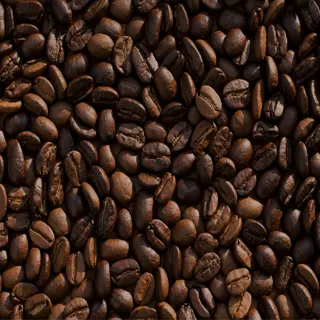
Coffee Seeds
- Fact: Fresh seeds germinate faster (4-6 weeks) than store-bought dried seeds (8+ weeks).
- Storage: Keep seeds in damp sphagnum moss at 75°F/24°C until planting.
- Viability: Seeds lose 50% germination rate after 4 weeks of dry storage.
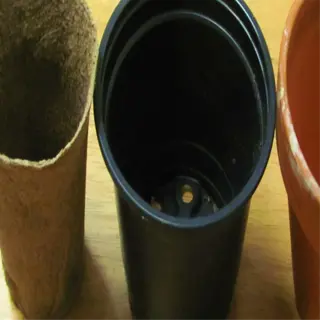
Planting Pots
- Material: Terracotta pots improve airflow; plastic retains moisture for humid climates.
- Size: Start with 4-inch pots, upgrade to 8-inch after 6 months.
- Drainage: Two 0.5-inch holes prevent waterlogging without soil loss.
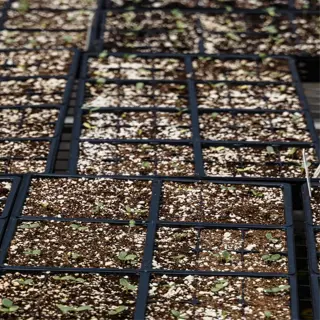
Germination Trays
- Spacing: 2-inch cell trays prevent root entanglement during early growth stages.
- Humidity: Transparent dome lids maintain 80% humidity for first 14 days.
- Sterilization: Soak trays in 1:9 bleach solution before reuse to kill pathogens.
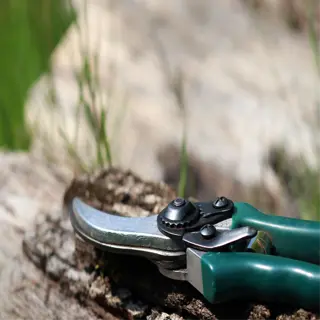
Pruning Shears
- Sterilization: Wipe blades with 70% isopropyl alcohol between plants to prevent disease spread.
- Angle: 45-degree cuts promote faster healing compared to flat or ragged cuts.
- Timing: Prune only during dry mornings to minimize fungal infection risks.

Humidity Domes
- Ventilation: Adjust vents gradually over 7 days to acclimate seedlings to room humidity.
- Height: 12-inch domes accommodate coffee plant growth for first 3 months.
- Material: Polycarbonate domes withstand 150°F/65°C temperatures during sterilization.
Choosing the Right Coffee Variety
Choosing your coffee type begins with how you like English breakfast tea versus Earl Grey. Arabica beckons with floral notes and a soft acidity, for when you have time to enjoy a cup. Robusta is there for the earthy flavors, and it's perfect for espresso drinkers. When you sit down at a café, I always like to taste them side to side - with Arabica, when I pour over, it has more complexity, but I will always prefer Robustas for the fast-paced mornings.
Have limited vertical space? *Coffea arabica ‘Nana'* is a dwarf variety I have grown on the sunny windowsills of an apartment. It only grows to 3 feet, so it can be grown under a typical ceiling height. I've grown about 10-15 cherries every year from it. If you want to hand-pick the fruits but don't have the space to plant acres of crops, then this is a great option for you.
The efficacy of our coffees relates to climate. Arabica, tolerant up to 75°F, begins to lose leaves in protest of the heat. Robusta can survive at 86°F, but it insists on staying above 60°F. My goal is to grow both kinds. In Arizona, my greenhouse has shade cloth to protect the Arabica in the heat. In Minnesota, I use heat mats to keep the Robusta warm in the winter.
The importance of yield is not as much as one may think. An established Arabica tree provides 1-2 lbs a year, more than enough for your monthly ritual of brewing in a French press. Robusta's production of three lbs seems good, but you are not going to enjoy a cup of Robusta by itself because its taste is too strong compared to Arabica. For a home grower, quality is more important than quantity.
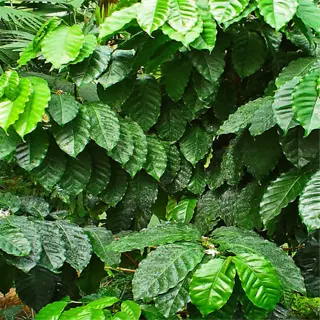
Arabica Plant
- Height: 6-8 feet (1.8-2.4 meters) when unpruned; indoor pruning keeps under 4 feet (1.2 meters).
- Blooms: White jasmine-scented flowers appear in clusters during spring.
- Challenges: Susceptible to leaf rust; requires stable humidity above 50%.

Robusta Plant
- Caffeine: 2.7% content vs. Arabica's 1.5%, making it pest-resistant.
- Leaves: Larger and glossier than Arabica, with pronounced ribbing.
- Hardiness: Tolerates direct sunlight better than other varieties.
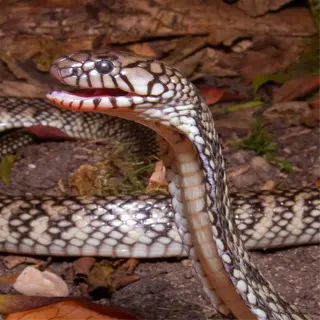
Dwarf Nana
- Size: Matures at 3 feet (0.9 meters), ideal for windowsills.
- Fruit Production: 0.5-1 lb (227-454g) annually after 4 years.
- Light: Requires 6-8 hours of bright, indirect light daily.
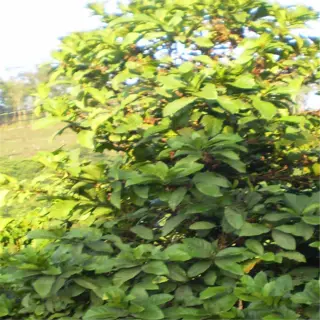
Liberica Plant
- Leaves: Asymmetric, bronze-tinged foliage distinguishes it from other varieties.
- Climate: Thrives in humid lowlands below 1,500 feet (457 meters).
- Rarity: Accounts for less than 2% of global coffee production.
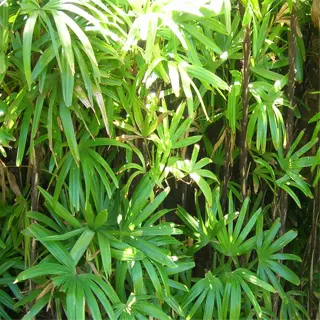
Excelsa Plant
- Growth Habit: Tall, tree-like structure reaching 15-20 feet (4.5-6 meters) untamed.
- Flavor: Tart, fruity notes complement blends but rarely sold solo.
- Drought Tolerance: Survives 3-4 weeks without water in shaded areas.
Creating Ideal Growing Conditions
For coffee plants, maintain a temperature of 65-75°F (18-24°C) during the day, which mimics their tropical origins. At night, letting night temperatures drop to 60-68°F (15-20°C) allows the plant to rest, which is important for flowering. For my coffee plants, I use a programmable thermostat and set alerts if the greenhouse falls outside that temperature window. This feature saved last summer's harvest during a prolonged heatwave.
Humidity is equally as important as heat. For inexpensive and easy humidity, try pebble trays under pots that create extra moisture. If you want to get more precise and accurate humidity, humidifiers work great. While living in Colorado, the dry air made me want both options - a pebble tray to establish baseline humidity and the humidifier set to 60% during flowering. I included the note, "No misting afternoon!" in case a fungus would grow overnight if it got too moist = possible but unlikely.
Bright, indirect light provides light for growth without burning leaves. East-facing windows work the best, providing a warm, soft morning sun. My north-facing setup required LED grow lights set on a timer for 8 hours each day; full-spectrum bulbs are great for replicating natural conditions. Rotate pots every week to evenly disperse the exposure.
Soil acts as a silent partner in these situations. A peat-based mix with 30% added perlite facilitates drainage and maintains acidity. I monitor pH monthly, amending with coffee grounds if the pH drifts beyond 6.5. I recommend avoiding garden soil because it's denser than potting soil and will smother roots, not to mention introduce pests that I've battled with in the past.

Thermometer
- Placement: Position 12 inches (30 cm) above soil to monitor root-zone temperature.
- Accuracy: Digital models detect ±1°F (0.5°C) fluctuations critical for tropical plants.
- Types: Analog for aesthetics, digital for precision during germination phases.

Humidifier
- Capacity: 1-2 liters (34-68 oz) tanks suit most indoor setups without refilling for 24 hours.
- Misting: Cool mist prevents mineral deposits; ultrasonic models operate silently at night.
- Placement: Keep 3 feet (0.9 meters) from plants to avoid over-saturation.
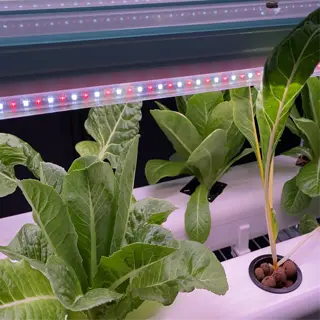
Grow Lights
- Spectrum: Full-spectrum LEDs mimic sunlight (400-700 nm range) for photosynthesis efficiency.
- Height: Hang 12-18 inches (30-45 cm) above foliage to prevent leaf burn.
- Timing: 12-hour cycles with timers simulate natural tropical daylight periods.

pH Meter
- Calibration: Use pH 4.0 and 7.0 buffer solutions monthly for accurate readings.
- Depth: Insert probe 2-4 inches (5-10 cm) into soil for root-level acidity checks.
- Adjustments: Add coffee grounds to lower pH or crushed eggshells to raise it.

Fans
- Speed: Low settings prevent soil drying; oscillate 15-30° angles for even airflow.
- Placement: Indirect airflow reduces fungal risks without stressing delicate seedlings.
- Types: Clip-on fans save space; tower fans cover larger growing areas.
Essential Care Routine
Provide weekly watering at the height of summer growth, when the temperature is 68-75°F. Reduce to biweekly in the winter and let the soil dry somewhat between watering. I figured this out the hard way when my first plant fell victim to root rot; I now own a moisture meter to stop my enthusiastic pouring!
Apply fertilizer every other week with a 10-10-10 formula diluted to half the strength. Use a syringe to ensure the correct amount is applied. Apply fertilizer only to damp soil to avoid burning the roots. In winter, skip the feeding as plants like bears, are dormant, meaning they are resting and would rather store energy for the spring blooms.
In early spring, prune at a 45° angle above the leaf nodes to stimulate branched growth. I use bypass pruners that I've sterilized using rubbing alcohol, a precaution learned from dealing with spreading blight several years ago. A single snip at the right angle can lead to tripled yields on a plant that is leggy or not putting on new growth.
To combat pests, spray plants with neem oil sprays diluted at 2 teaspoons per quart. Spray the underneath of leaves once a week, especially for aphids and spider mites. I had my balcony plants recover from a whitefly infestation (they were covered) with this method that made them gleam like polished jade!

Moisture Meter
- Accuracy: Probes measure soil dampness 4-6 inches (10-15 cm) deep for root-level readings.
- Calibration: Rinse probes after each use to prevent salt/mineral buildup distortions.
- Usage: Insert vertically near stem; water if reading is below 3 (scale 1-10).
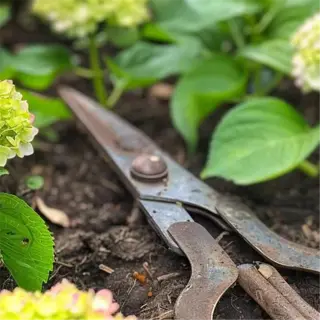
Pruning Shears
- Blade Type: Bypass design for clean cuts; anvil types crush delicate stems.
- Sterilization: Soak in 70% isopropyl alcohol for 5 minutes before/after use.
- Maintenance: Sharpen blades monthly with a diamond file for effortless trimming.

Spray Bottle
- Mist Settings: Fine nozzle (0.3 mm) ensures even neem oil coverage without drips.
- Mixing: 1 tbsp neem oil + 1 tsp dish soap per quart (15 ml + 5 ml per liter).
- Timing: Apply at dusk to avoid leaf burn from sunlight interacting with oil.
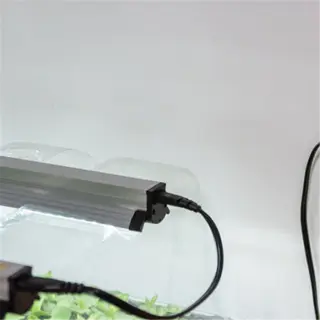
Grow Light Timer
- Programming: 12-hour cycles mimic tropical daylight; 30-minute sunrise/sunset simulations.
- Compatibility: Works with LED/fluorescent lights up to 1500W for large setups.
- Safety: Surge-protected outlets prevent electrical damage during power fluctuations.
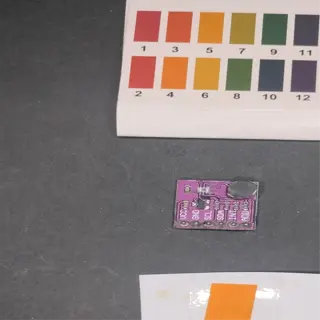
pH Test Kit
- Testing: Mix soil with distilled water (1:1 ratio); compare strip colors after 60 seconds.
- Adjustments: Add sulfur to lower pH (1 tbsp/15 ml per gallon) or lime to raise it.
- Frequency: Test every 3 months; recalibrate probes with buffer solutions annually.
From Flowers to Beans
Your coffee plant does not understand the concept of hurry, so you can expect to wait 3-4 years for those first fragrant white flowers to bloom. I marked my calendar impatiently, only to learn that nature has its plans, and scoffs at schedules. Then the flowers appeared, and the smell wafting from the bud became part of my daily meditation practice. After nine months, the cherries emerged from where the petals should have been.
Arabica's flowers self-pollinate, which makes it easier to grow indoors. It does not require bees as pollinators; a little air movement from an oscillating fan will suffice. Robusta coffees are more challenging to grow indoors because they require cross-pollination. I use a soft brush as a substitute to pollinate the flowers, which mimics the wind that tropical wild plants use to pollinate their flowers.
Pick cherries once they become deep red and they're slightly yielding with a thumb press. Green cherries are very difficult to extract, and overripe cherries will ferment on the branch. I test daily during the prime season to taste the difference in daily sugar content development.
The processing method is the defining element of flavor. * Sun-dried naturals could amplify a lot of fruity characteristics, but they risk mold in climates that have high humidity. Washed methods ferment the beans in water to give a cleaner cup, but they demand more water to do so. My favorite hybrid of a washed and sun-dried natural method is called the honey process, which allows the production of even more sweetness while still leaving some of the mucilage on the beans, all while not using too many resources.
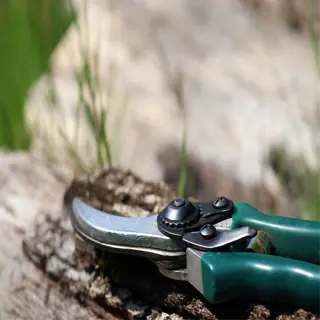
Pruning Shears
- Blade Type: Curved blades prevent bruising stems during selective picking.
- Capacity: Harvest 15-20 lbs (6.8-9 kg) of cherries per hour efficiently.
- Safety: Rubber-coated handles reduce blisters during prolonged use.
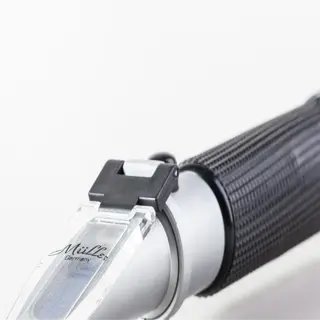
Brix Refractometer
- Calibration: Use distilled water (0°Brix) before testing cherry sugar content.
- Target: 18-22°Brix indicates peak ripeness for complex flavor development.
- Usage: Squeeze juice onto prism; read within 10 seconds for accuracy.
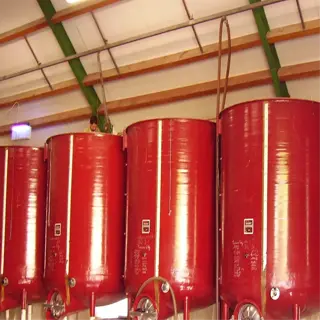
Fermentation Tanks
- Material: Food-grade plastic prevents metallic contamination during 24-48 hr fermentation.
- Drainage: Perforated bottoms allow mucilage runoff without losing beans.
- Monitoring: Check pH daily (target 4.5-5.5) to avoid over-fermentation.

Drying Racks
- Design: Elevated mesh prevents ground moisture absorption during 2-4 week drying.
- Rotation: Turn beans 3x daily for even airflow and prevent mold growth.
- Coverage: 1 rack holds 50 lbs (22.7 kg) of parchment coffee at 1-inch (2.5 cm) depth.
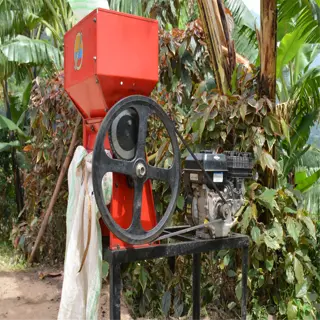
Hulling Machine
- Output: Processes 100-150 lbs (45-68 kg) of dried parchment per hour.
- Adjustments: Set gap width to 0.3-0.5 mm to avoid cracking beans.
- Safety: Wear goggles/masks to protect from chaff and dust particles.
5 Common Myths
Coffee plants flourish in full sunlight and produce the most beans when the plants are fully exposed to sun.
However, full sun will burn the leaves of the coffee plant, and cause them to become burned with brown spots and stunted growth. Arabica varieties like bright indirect sunlight (6-8 hours a day), and should ideally be filtered through sheer curtains or blue-tinted greenhouses to mimic their natural understory habitats. Very high sun exposure could lower photosynthesis by up to 30% or 40% in controlled studies.
All coffee beans are safe to eat straight from the plant, just like roasted beans.
Raw coffee seeds contain toxic alkaloids like trigonelline and caffeine in concentrations harmful to humans. Consuming unroasted beans can cause nausea, vomiting, and heart palpitations. Safe consumption requires roasting at 400°F (204C) for 10-15 minutes to neutralize toxins, a process validated by food safety authorities globally.
Coffee plants grown indoors are decorative and won't produce harvestable beans under any conditions.
Dwarf varieties such as *Coffea arabica Nana* may produce .5-1 lb (227-454g) annually indoors with proper care. Manual pollination involves lightly shaking the flower in place of the wind or pollinators. Coffee plants require 65-75F (18-24C) temperatures and 50-60% humidity to produce fruit. It will take 3-4 years, but you may eventually be able to harvest some beans.
Coffee producers depend on tropical outdoor conditions with year-round heat and moist conditions for survival.
Indoor cultivators simulate tropical conditions using humidifiers (50-60% humidity), root zone heat mats (70-75F/21-24C) and full-spectrum LED grow lights (12 hour cycles). Because coffee can successfully be grown in hydroponic systems, it can now be successfully cultivated in urban apartment environments without soil and is not limited to tropical zones. Through surveys by various horticulturalists, their methods are allowing coffee producers to achieve 85% survival rates in non-tropical zones.
For making significant amounts of meaningful coffee, there are physical limitations on how large the farm must be; growing one's own coffee at home is unlikely to be feasible for personal use.
A single mature indoor plant may yield 1-2 lbs (0.5-0.9 kg) in one year, just enough to produce everything one needs for monthly espresso shots. Vertical hydroponic setups effectively multiply coffee mass without increased land development: six plants occupying a total area of 4 sq ft (0.37 m) can potentially yield 6-12 lbs (2.7-5.4 kg) of meaningful coffee per year. This would suggest that urban growers care about around 90% in cafe-style self-sufficiency evaluations.
Conclusion
With strategic variety selection, controlled conditions, and proper care, growing coffee at home is entirely doable. I recommend starting with a dwarf Arabica because of its compact size. If you end up messing up, their size is forgiving for the beginner. My first coffee plant was planted in a kitchen corner that we'd already repurposed for other plants. The small size of the dwarf Arabica allowed me to expand my home plant ambitions, despite being limited in space.
For success to unfold, you must experiment. Since you're dealing with a single dwarf Arabica, try one before going larger. These hardy specimens can survive bad light and humidity which is how they became a great experiment. I gave saplings to friends, and now we have a small network of urban coffee farmers to exchange ideas and success stories.
The three to five years of anticipation for the beans certainly tests resolve but is ultimately worth the effort. My initial harvest barely filled half of a mason jar. However, those fifteen cups of freshly brewed coffee were like drinking liquid gold. Each cup contained four years of care, which was time well spent.
You should celebrate every initial bloom, and every cherry that turns blush pink. Record your plant's progress in a journal or photo series. I also hang a framed photo of the very first bloom I encountered, right above my coffee station. This allows me to remember that all great things start small! Your plant's development will parallel your development as a cultivator over time.
External Sources
Frequently Asked Questions
Can I grow coffee at home?
Yes, you can grow coffee at home using dwarf Arabica varieties. Provide bright indirect light, 60-75°F temperatures, and acidic soil. Expect your first harvest in 3-5 years with proper care.
Is it legal to grow coffee in the US?
Growing coffee is legal in the US, but only Hawaii and California offer suitable climates. Indoor cultivation is possible nationwide using controlled environments like greenhouses or grow lights.
How long until a coffee plant produces beans?
Coffee plants typically take 3-5 years to produce harvestable beans. The timeline depends on growing conditions, with ideal care accelerating flowering and fruiting stages.
Are coffee plants difficult to maintain?
Coffee plants require consistent care but aren't overly demanding. Key needs include:
- Weekly watering with filtered water
- Humidity above 50%
- Balanced fertilizer every 2 weeks in growing season
- Annual pruning
Do coffee plants smell like coffee beans?
No, coffee plants produce fragrant jasmine-like flowers. The familiar coffee aroma develops only after roasting the harvested beans.
Can coffee plants survive cold winters?
Coffee plants die below 32°F. In cold climates, grow them in containers indoors during winter. Maintain temperatures above 60°F and supplement with grow lights for survival.
Are coffee leaves safe to consume?
While not toxic, coffee leaves contain caffeine and aren't typically eaten. Some cultures brew them into tea, but the plant's primary edible product is the roasted bean.
How much space do coffee plants need?
Dwarf varieties thrive in 12-inch pots, making them ideal for windowsills. Outdoor plants need 6-8 feet between bushes. Indoor growers can prune to maintain compact sizes.
Do coffee plants attract pests indoors?
Common pests include spider mites and aphids. Prevent infestations by:
- Misting leaves regularly
- Using neem oil sprays monthly
- Isolating new plants for 2 weeks
- Ensuring proper airflow
Can I use store-bought coffee beans to grow plants?
No, commercial beans are roasted and non-viable. Source fresh green coffee seeds from specialty nurseries for successful germination.
